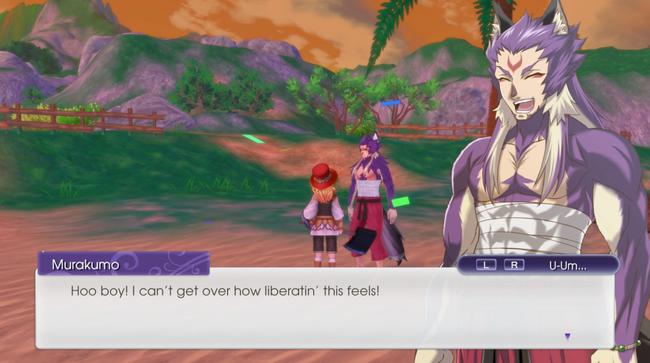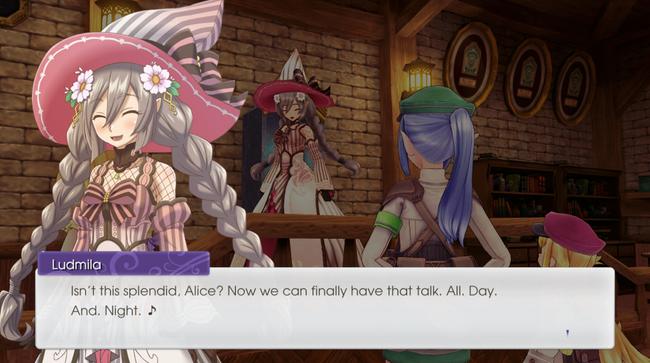
Rune Factory 5 Interview: The Localization Team on Fuuka, their process, and big achievements
Rune Factory 5 just saw its global debut within the last week, almost a year after its launch in Japan. Outside of being a big deal as the series' first entry in nearly a decade, the fifth game celebrates an important leap forward with same-gender marriage and a hefty script that even rivals the beloved fourth game.
With the series' revival out now on Switch, we had the chance to send over a few questions for the localization team, and learn a little more about the process of bringing Rigbarth to overseas players. Our interview shares stories on challenging localization characters like Fuuka, and the extensive amount of work that went into fixing voice files.
Below, we've included our questions for Rune Factory 5's localization team, with answers from localization manager John Wheeler and assistant localization manager Lori Snyder. We've published the Q&A alongside another interview with director Shiro Maekawa, and our review of the series revival.

Q: Were there any characters you found particularly challenging or interesting when localizing their speech, mannerisms, or story from Japanese to English? For example, Fuuka speaks in a "different language". Was it made quite similar in the original text or did you need to go for a different approach?
Lori Snyder (Assistant Localization Manager): I think Fuuka’s language was one of the most challenging things that the team tackled during the course of RF5’s localization, as she originally spoke with just simple “gau gau” noises in Japanese. We felt that translating her growls directly would subtract from Fuuka’s character in English, and wanted to avoid taking that route if it was possible. Adrienne, one of our translators, suggested giving Fuuka an actual language, which would have its own set of vocabulary and simple grammar rules. We thought it was a great idea, so she gave us a list of terms she’d created for Fuuka that the rest of the team could reference during localization. Over time, that list evolved into a huge were-animal language dictionary, with extra grammar rules implemented for consistency. So in Rune Factory 5’s localization, the language of were-animals is a functional language, with words and phrases the player can pick up for themselves, and we’re really excited for players to learn more about Fuuka and her language.
John Wheeler (Localization Manager): I remember receiving reports of typos in Fuuka’s language from one of our editors during LQA and thinking, “I’m just going to have to trust you on this.” We spent a lot of time figuring out how to approach the language, and even the localization of her name was a hot topic of debate among our staff early in the process (“Fauna” was a suggested alternative). Because we were working with a fictional language, preparing to record her voices was also a little nerve-wracking. But after 10 minutes of our first session with Cristina Valenzuela, we knew it would be okay.
Q: The Rune Factory series has been going for a while, there was even a point where we'd thought it had ended. Has anyone in the loc team been involved with the series before? Or would it have helped if there was any with that history?
John Wheeler: One of our lead translators on the game, Adrienne Beck, has worked on the series since Rune Factory 4 and translated the new content for Rune Factory 4 Special, so I don’t think it’s an exaggeration to say much of the voice and tone of the English that players are familiar with is thanks to her. Lori and I worked on Rune Factory 4 Special voice recording and QA, and we’re both long-time fans of the series. There were also plenty of newcomers, but everyone worked to make sure the localization would be tonally consistent with past games.

Q: Rune Factory 4 was known for its massive amount of dialogue, giving the characters much more life. Is Rune Factory 5 much the same, longer, or more toned down?
Lori Snyder: I’m pleased to report that Rune Factory 5’s dialogue is just as expansive as Rune Factory 4’s, if not a little more so! The residents of Rigbarth all have a bunch of stories to tell and things to say about pretty much everything going on in the world of RF5! Sometimes the protagonist will jump into the conversations, too, and their chats with the residents can range from heartfelt to just plain silly, so I think players coming in from Rune Factory 4 can expect the same depth of character in Rigbarth that they found back in Selphia.
Q: Do you have any tales from LQA for Rune Factory 5 that’ll stay with you for any reason - whether they be frustrating or comical?
Lori Snyder: My biggest RF5 LQA achievement is fixing the voice files, without a doubt. When we got our first QA build, we had thousands of instances where the English voiced lines weren’t matching a scene’s context, and it was pretty terrifying at first! During the course of LQA I worked together with the developers to fix this, and we were able to find a solution to these issues. In order to do this, I had to look through a list of every instance of voiced text (there were 26,000!) so I could send it back to the developers, which took about a month, but we managed to get those fixes implemented so the voice clips matched each in-game conversation. It was such a big task, I don’t think I could forget it even if I tried!
Q: Localization can sometimes seem like a bit of a nebulous phrase for folks not familiar with game development - could you share a brief look at the many hats you wear or even small snippets of what a day looks like for some of the team?
Lori Snyder: For me personally, my responsibilities usually depend on what stage we’re at with our current projects. When a project’s in its production phase, I might be knee-deep in translating the text for it, which I’ll then hand off to our editors and proofers when I’m done. At the same time, I might be translating our team’s feedback on another project concept into Japanese and emailing Marvelous’ localization producers and development teams on how these ideas might be received by Western players. During a project’s LQA, I could be managing text files one minute, playtesting a game another minute, then translating 5 bug reports into Japanese the next! Plus, if we’ve got other projects close to release, I’ll help the marketing team with social copy or jump into our promotional streams of the game. Not everyone on the team needs to wear all these hats, of course, but it’s been really rewarding to get as much experience as I have with all these things, and with games that I’m really passionate about. I don’t think I could get that anywhere else.

Q: In the localization blog, you shared previews of a design document for providing ideas to Marvelous in order to implement same-sex marriage. Have you encountered situations like this before in your career with helping a dev team implement changes into systems or the original script?
John Wheeler: As publishers, we typically provide feedback on content that might affect a game’s reception overseas, but this was the first time I can remember that we were asked to take such a hands-on approach with the implementation of a new system. That said, after we provided our initial ideas, our role was to review proposed solutions from the development team, localize the added content, then test the new version. This is similar to how the process has worked in the past.
Q: When communicating with Marvelous on these additions and changes, were there any new game design/localization skills or other tools you had to learn to use to deliver your suggestions?
John Wheeler: Not really. The documentation we were working from was straightforward and easy-to-understand and, like most of what we do, Excel-based. As I mentioned above, ultimately we are not developers, so we need to leave actual design and implementation to the experts.